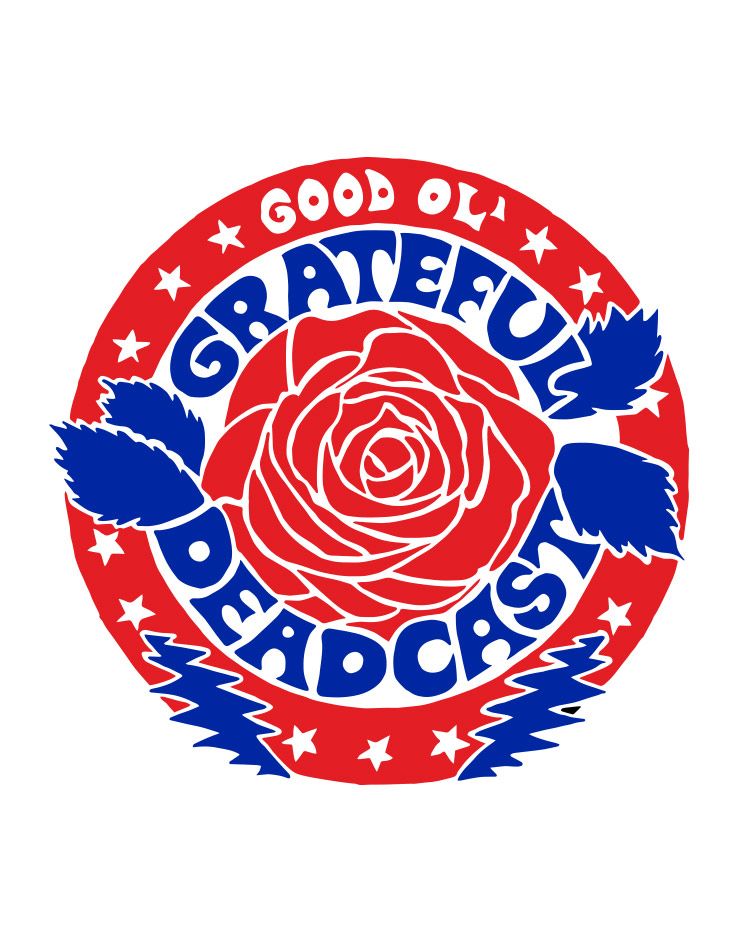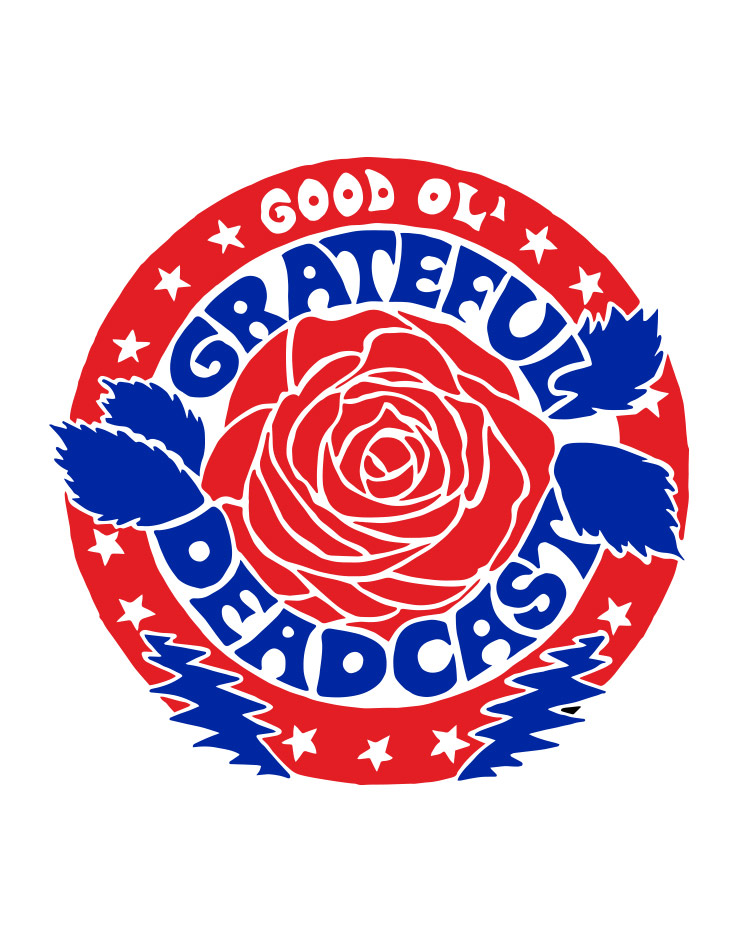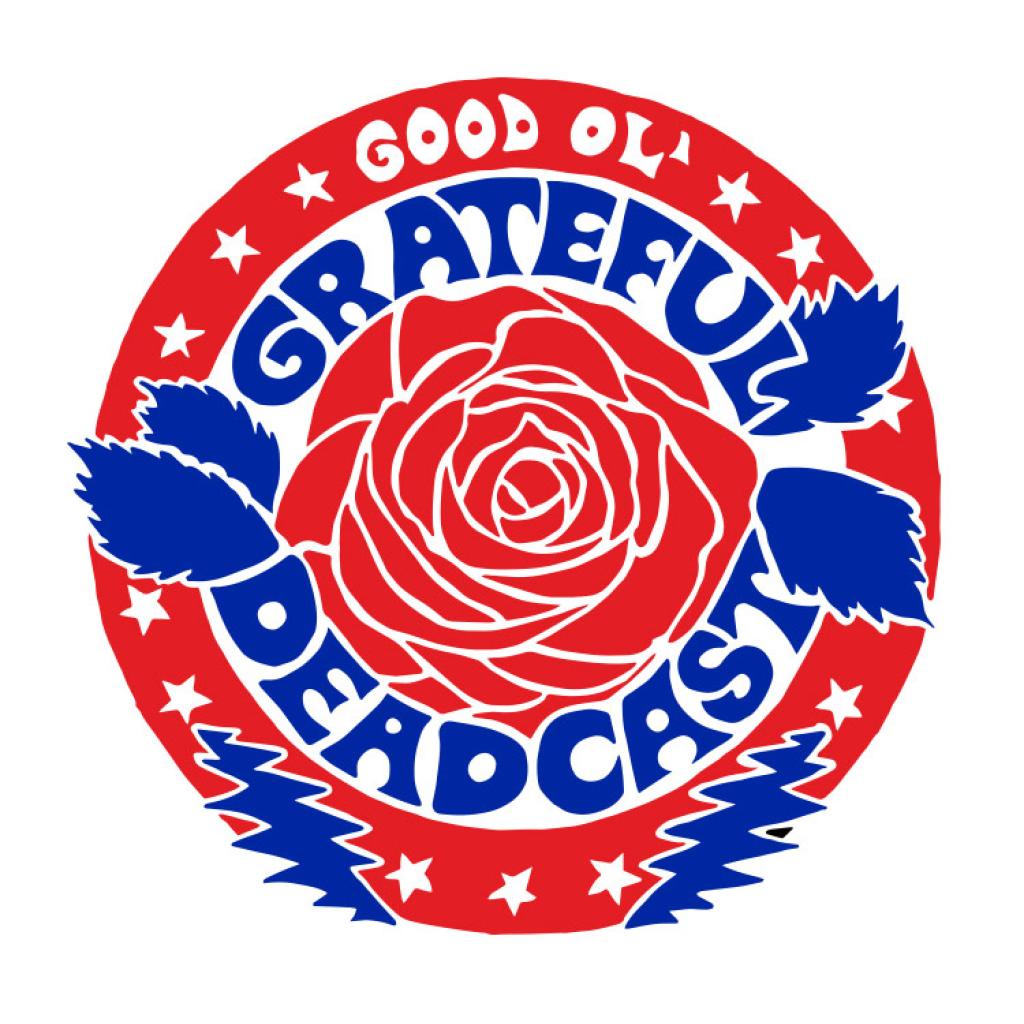A surprising and wide-ranging conversation with Ned Lagin, the pioneering jazz-trained electronic composer whose friendship with the Grateful Dead began when the band crowded into his M.I.T. dorm room to jam and would encompass contributions to American Beauty and Wake of the Flood, nearly 20 onstage appearances with the band between 1970 and 1975, and Lagin’s own Seastones project, released by Jerry Garcia’s Round Records, featuring contributions by Garcia, Phil Lesh, Mickey Hart, David Crosby, Grace Slick, and more.


Nedcast supplementary notes
By Jesse Jarnow
Ned Lagin met the Grateful Dead when he was an undergraduate studying biology at M.I.T. and jazz at Berklee. Over the next half-decade, between 1970 and 1975, Lagin was part of the Dead’s world. His Seastones project developed in parallel with the band’s emerging Wall of Sound. Lagin ultimately toured with the band throughout 1974, with Garcia’s Round Records issuing the Seastones LP the following year.
In 2018, Ned put out an expanded two-CD edition of Seastones featuring much never-heard music, including contributions by Jerry Garcia, Phil Lesh, Mickey Hart, David Crosby, Grace Slick, Spencer Dryden, and David Freiberg. (I wrote a long review about it for Pitchfork.) This year, Important Records put out a new vinyl edition containing some of what Ned calls moment-forms.
Ned released a new album of original material, Cat Dreams, exploring many other different modes of composition and performance, including contributions by pedal steel player Barry Sless and Sons of Champlin guitarist Terry Haggerty. He likewise launched SpiritCats.com, a website featuring his art, photography, and writings. NedBase compiles a chronology of Ned’s musical career. Those thirsting for more information about Ned Lagin might also enjoy the 70-page chapter on Seastones in Melvin Backstrom’s thesis, The Grateful Dead and Their World: Popular Music and the Avant-Garde in the San Francisco Bay Area, 1965-75.
Ned Lagin with Bob Weir, Jerry Garcia, and Keith Godchaux, SNACK Benefit, Kezar Stadium, San Francisco, March 23rd, 1975.

Comment
old fan
hey guys, I am a very old fan of your music. currently, I am available at https://central-immo.net/
Exercize Books
Ned mentioned some books with exercizes in them that jerry stole. Does he remember what those were?
Ned "Legend" Lagin
Wow, so impressed by Ned! the specificity of his chronological memory, his beautiful understanding of the pursuit of the communal ideal, his description of the process of "lubricate the structure", his wide open ears from country, to jazz, to avant garde, envelope pushing musics; his pioneering forays into electronics with the mind of a scientist - but ever-so-clearly, a deep and beautiful heart as well. His incredible use and appreciation for the Wall of Sound. To have been at a show where the weird spiralstream of live abstract sound washing over the crowd between sets, whistling back at the rude Germans, to the point where they dissolved the harsh criticism and brought everybody together - a treasured thought for me of those end-of-innocence days, before the music business, driven by the cares of an aging family with ever more children to support and care for supplanted the powerful, open and youthful LSD-driven spirit, giving way to addictive, dark drugs and the reality of record company balance sheets. His relationship with Bear. Really overall, Ned, you're an amazing speaker and storyteller, and your tales reflect a finely-etched inner clarity that does justice to this amazing, fruitful legacy of freedom, truth and beauty.
Speaking of justice done, to you, Rich & Jesse - thank you for a rich, deep audio archive documentary, the scope, depth and breadth of which has never been equaled and I find it hard to think it could ever be bested. I can't believe the amount of dedication and the wealth of relationships this effort took. So worthy - I could never say enough for what you've done for the team. You guys are heroes - really! I trust Rhino Entertainment rewards you for your efforts and that there is much more to come. But if not, please rest well in the knowledge that you are the stars on top of the Christmas Tree of this critically important trunk in the forest of American history.
Idea for the future: I loved what you did around Jerry's pedal steel playing for sure, but what I was missing from the sesh on JG's folk days was more focus on JG and the BANJO! Kinda got glossed over, I thought. Which is a shame, since this period is well-documented as the heart of what made him a pro, a master of instrumental music. As you know, Jerry himself said that's where it came from - precise fretting and clear tones. I don't recall exactly where I read this, but the best historical book I've read is Greenfield's "Dark Star", and it's probably in there... But I recall reading about MG's first encounter with JG. She was walking by a pizza joint in Palo Alto and upstairs in the back, in the afternoon, playing to an empty room, was Jerry practicing his banjo, same lick - over and over. She didn't even know him yet, and didn't even speak to him, just Jerry and the five-string. Her comment was along the lines of, "OK, cool - he's pretty handsome (/looks good/good looking). Then she walks out and that's it. And then it was, I'm pretty sure, Sara Ruppenthal Garcia who recalled the time when Jerry got his first pro-level banjo. It was a huge thing, like all their savings went into it, because, in her words (or words to the effect...) "...that banjo was the key to how we were going to pay the rent." - like the basis for their family life. I mean, really. You guys, as players, would resonate with this iconic place the 5-string had in all things that came forth after it. So I'd love to see an expansion on that.
Anyway, cheers, it's been fun! bp
1 more thing...
I too wanted to ask about the "scale and arpeggio books" that Ned refers to (@ 20:03). I've long wanted to know more about JG's study material, as he mentioned several places the clarinet study books (Long Strange Trip has a 15 second clip of Bob's voice-over where Jerry's in a dressing room doing a weird practice lick, but that's all I've found). I'm happy to ask Ned myself, but I can't find a way to contact him at the links provided, above. Any chance you could help us guitarists know what Ned was referring to? Thanks! bp
"How I ruined Garcia"
For those who asked, some more specific answers from Ned about the exercise materials/books that he lent to Jerry:
"How I ruined Garcia"
These are some of the practice materials I lent to Jerry, or played with him, or played alone at afternoon sound checks when alone on stage.
1. Hanon - The Virtuoso Pianist in Sixty Exercises (dates from 1910-11), still have a copy.
2. Schmidt - don't remember title, my copy still with Jerry?
3. Exercises - reharmonization scales and arpeggios from Berklee classes
4. "Thesaurus Of Scales And Melodic Patterns" by Nicolas Slonimsky




For those who asked, some more specific answers from Ned about the exercise materials/books that he lent to Jerry:
"How I ruined Garcia"
These are some of the practice materials I lent to Jerry, or played with him, or played alone at afternoon sound checks when alone on stage.
1. Hanon - The Virtuoso Pianist in Sixty Exercises (dates from 1910-11), still have a copy.
2. Schmidt - don't remember title, my copy still with Jerry?
3. Exercises - reharmonization scales and arpeggios from Berklee classes
4. "Thesaurus Of Scales And Melodic Patterns" by Nicolas Slonimsky
I too wanted to ask about the "scale and arpeggio books" that Ned refers to (@ 20:03). I've long wanted to know more about JG's study material, as he mentioned several places the clarinet study books (Long Strange Trip has a 15 second clip of Bob's voice-over where Jerry's in a dressing room doing a weird practice lick, but that's all I've found). I'm happy to ask Ned myself, but I can't find a way to contact him at the links provided, above. Any chance you could help us guitarists know what Ned was referring to? Thanks! bp
Wow, so impressed by Ned! the specificity of his chronological memory, his beautiful understanding of the pursuit of the communal ideal, his description of the process of "lubricate the structure", his wide open ears from country, to jazz, to avant garde, envelope pushing musics; his pioneering forays into electronics with the mind of a scientist - but ever-so-clearly, a deep and beautiful heart as well. His incredible use and appreciation for the Wall of Sound. To have been at a show where the weird spiralstream of live abstract sound washing over the crowd between sets, whistling back at the rude Germans, to the point where they dissolved the harsh criticism and brought everybody together - a treasured thought for me of those end-of-innocence days, before the music business, driven by the cares of an aging family with ever more children to support and care for supplanted the powerful, open and youthful LSD-driven spirit, giving way to addictive, dark drugs and the reality of record company balance sheets. His relationship with Bear. Really overall, Ned, you're an amazing speaker and storyteller, and your tales reflect a finely-etched inner clarity that does justice to this amazing, fruitful legacy of freedom, truth and beauty.
Speaking of justice done, to you, Rich & Jesse - thank you for a rich, deep audio archive documentary, the scope, depth and breadth of which has never been equaled and I find it hard to think it could ever be bested. I can't believe the amount of dedication and the wealth of relationships this effort took. So worthy - I could never say enough for what you've done for the team. You guys are heroes - really! I trust Rhino Entertainment rewards you for your efforts and that there is much more to come. But if not, please rest well in the knowledge that you are the stars on top of the Christmas Tree of this critically important trunk in the forest of American history.
Idea for the future: I loved what you did around Jerry's pedal steel playing for sure, but what I was missing from the sesh on JG's folk days was more focus on JG and the BANJO! Kinda got glossed over, I thought. Which is a shame, since this period is well-documented as the heart of what made him a pro, a master of instrumental music. As you know, Jerry himself said that's where it came from - precise fretting and clear tones. I don't recall exactly where I read this, but the best historical book I've read is Greenfield's "Dark Star", and it's probably in there... But I recall reading about MG's first encounter with JG. She was walking by a pizza joint in Palo Alto and upstairs in the back, in the afternoon, playing to an empty room, was Jerry practicing his banjo, same lick - over and over. She didn't even know him yet, and didn't even speak to him, just Jerry and the five-string. Her comment was along the lines of, "OK, cool - he's pretty handsome (/looks good/good looking). Then she walks out and that's it. And then it was, I'm pretty sure, Sara Ruppenthal Garcia who recalled the time when Jerry got his first pro-level banjo. It was a huge thing, like all their savings went into it, because, in her words (or words to the effect...) "...that banjo was the key to how we were going to pay the rent." - like the basis for their family life. I mean, really. You guys, as players, would resonate with this iconic place the 5-string had in all things that came forth after it. So I'd love to see an expansion on that.
Anyway, cheers, it's been fun! bp